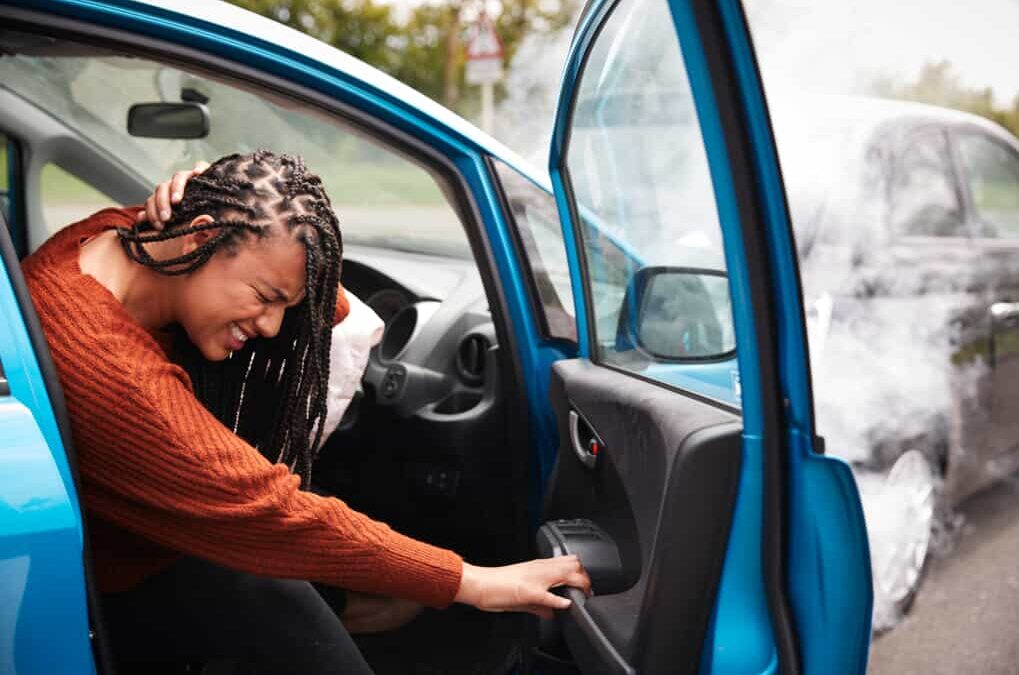Car accidents are an unfortunate reality for many Floridians, with approximately 400,000 crashes occurring annually. These accidents often lead to a wide range of injuries, from minor cuts and bruises to severe, life-altering conditions. Understanding the most common types of injuries resulting from car accidents can help you recognize the importance of seeking immediate medical attention and legal assistance. If you or a loved one has been injured due to someone else’s negligence contacting ECD Law can make a significant difference in your recovery and pursuit of justice.
Overview of Common Injuries from Car Accidents in Florida
Accidents in Florida—whether involving cars, motorcycles, or pedestrians—happen daily and can result in a range of injuries from minor to severe. Here are the most common injuries seen in Florida car accidents and what you need to know about each.
Whiplash: The Silent Injury
Whiplash is one of the most frequently reported injuries in car accidents. When your vehicle comes to a sudden stop, your neck can whip back and forth violently, causing damage to the joints, muscles, or tendons in the neck. This type of injury can be particularly insidious, as symptoms may not appear immediately but can develop over hours or even days after the accident.
Common Whiplash Symptoms:
– Neck Pain: Persistent pain that may radiate down the shoulders or arms.
– Stiffness: Difficulty moving your neck, leading to a reduced range of motion.
– Headaches: Often starting at the base of the skull and moving towards the forehead.
– Dizziness and Fatigue: Feeling lightheaded or unusually tired.
– Insomnia: Trouble sleeping due to pain or discomfort.
– Pain in the Shoulders and Lower Back: Radiating pain that can affect your daily activities.
Head Injuries: More Than Just a Bump
Head injuries are another serious consequence of car accidents. Traumatic brain injuries (TBI), such as concussions, occur when the brain experiences sudden trauma. Head injuries can range from mild concussions to severe brain damage that can have long-lasting effects on your health and well-being.
Types of Head Injuries:
– Concussions: Resulting from a blow to the head, causing temporary loss of brain function.
– Contusions: Bruising on the brain that causes bleeding and swelling.
– Skull Fractures: Breaks in the skull bone, which can be life-threatening.
– Penetrating Injuries: Objects piercing the skull and impacting the brain.
Common Head Injury Symptoms:
– Headaches: Severe, persistent headaches that may worsen over time.
– Nausea and Vomiting: Feeling sick to your stomach.
– Dilated Pupils: Uneven or unusually large pupils.
– Confusion and Difficulty Concentrating: Struggling with memory and focus.
– Sensitivity to Lights or Sounds: Increased sensitivity to light and noise.
– Slower Reaction Times and Exhaustion: Feeling sluggish and extremely tired.
– Numbness in Limbs: A tingling or numb sensation in arms or legs.
– Difficulty Balancing: Trouble with coordination and stability.
– Seizures: Sudden, uncontrolled electrical disturbances in the brain.
Back Injuries: The Hidden Agony
Back injuries are prevalent among car accident victims and can be severely debilitating. The spine, being central to body movement and support, is highly susceptible to injury from the force of a collision.
Common Types of Back Injuries:
– Herniated Disks: When a disk between your spinal bones slips out of place, causing pain, numbness, or weakness. This condition can be especially painful and may require extensive medical treatment, including surgery.
– Spinal Fractures: These occur when the upper body is thrown forward while the lower body remains in place, causing breaks in the vertebrae. Types of spinal fractures include:
– Flexion-Distraction Fractures:** Occur when the back or middle part of the vertebrae is broken.
– Burst Fractures: The vertebra is crushed in multiple places, spreading bone fragments and causing severe damage.
Back Injury Symptoms to Watch For:
– Pain: Persistent and severe back pain that can radiate to other parts of the body.
– Numbness or Tingling: Sensations that can indicate nerve damage.
– Muscle Weakness: Reduced strength in your arms or legs.
– Difficulty Moving: Trouble with basic movements or maintaining posture.
Broken Bones: The Visible Impact
The blunt force experienced in a car accident can break any bone in your body. The most commonly broken bones include:
– Legs and Arms: Often caused by the impact of the crash.
– Hands and Feet: Typically result from bracing for impact.
– Fingers: Commonly injured when gripping the steering wheel tightly.
– Nose and Jaw: Facial bones can break from hitting the steering wheel or airbag.
– Collarbone: Susceptible to breaks from the force of the seatbelt or airbag.
Common Signs of Broken Bones:
– Swelling and Bruising: Immediate swelling and discoloration around the injured area.
– Deformity: Visible misalignment or protrusion.
– Severe Pain: Intense pain that worsens with movement.
– Loss of Function: Inability to move the affected limb or area.
Cuts, Scrapes, and Bruises: The Commonplace Injuries
Even minor car accidents often result in cuts, scrapes, and bruises. These injuries can be caused by airbags deploying, hitting the steering wheel or windows, or loose objects in the car becoming projectiles.
Typical Causes of Cuts and Bruises After a Car Accident:
– Airbag Deployment: Can cause abrasions and bruises on the face and arms.
– Impact with Interior: Hitting parts of the car, like the dashboard or windows.
– Flying Objects: Items such as cell phones, books, or coffee mugs may become airborne during the crash.
Contact ECD Law to Get Legal Help for Car Accident Injuries
If you or a loved one has been injured in a car accident, it’s important to get the right legal support. At ECD Law, we help accident victims navigate the complex legal landscape to secure the compensation they deserve.
Contact Warren Chin and the lawyers at ECD at 941-366-8888 or use our online consultation form to schedule a free case evaluation. Let ECD Law support you in getting the justice and compensation you need to move forward.

